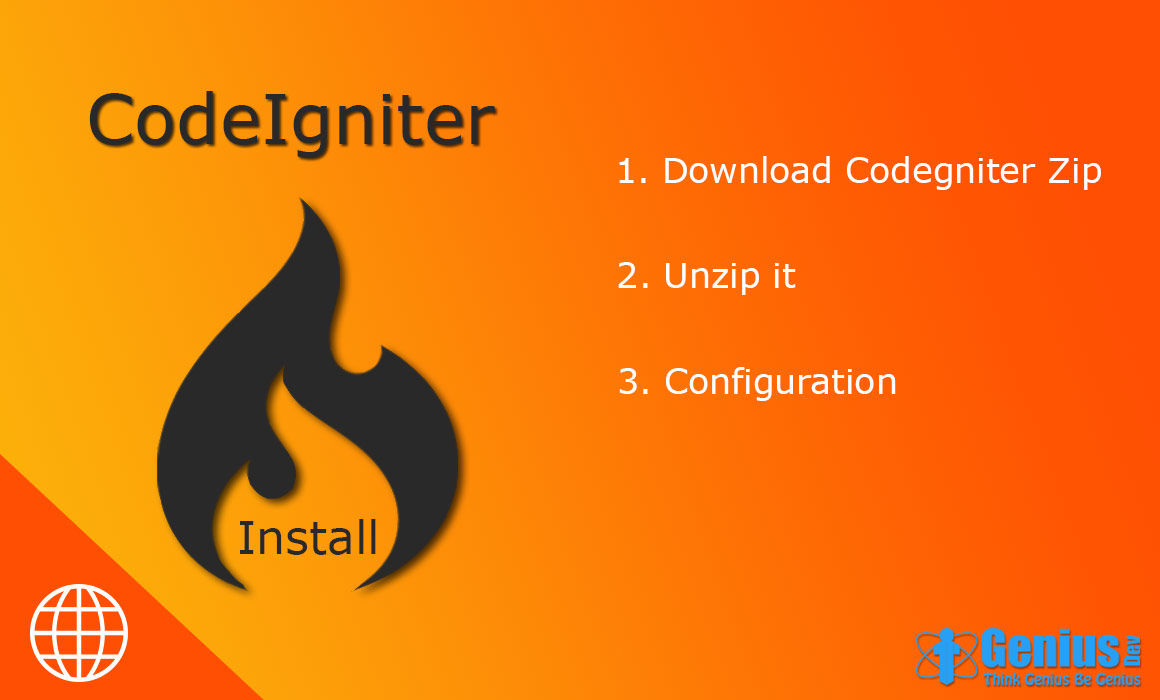CodeIgniter is an Application Development Framework which is a toolkit for people who build web sites using server scripting language PHP. Its goal is to enable you to develop projects much faster than you could if you were writing code from scratch, by providing a rich set of libraries for commonly needed tasks, as well as a simple interface and logical structure to access these libraries. It is provides so much libraries as like pagination,session, email, calender, javascript, url , zip class. You can easily intregates all library. CodeIgniter lets you creatively focus on your project by minimizing the amount of code needed for a given task.
Who is CodeIgniter For?
CodeIgniter is right for you if:
- You want a framework with a small footprint. It's means disk space is very small compare to other framework.
- You need exceptional performance. It is provides better performance in terms of response time, error handling etc.
- You need broad compatibility with standard hosting accounts that run a variety of PHP versions and configurations.
- You want a framework that requires nearly zero configuration. You does not too much step for configuration of codegniter.
- You want a framework that does not require you to use the command line. You does not needs any step for command line step to be followed in configuration step.
- You want a framework that does not require you to adhere to restrictive coding rules. There are no restriction for coding. You can write codegniter sql builder or you can use basic sql statement as you chose. There are not restriction about that statement.
- You are not interested in large-scale monolithic libraries like PEAR.
- You do not want to be forced to learn a templating language (although a template parser is optionally available if you desire one).
- You eschew complexity, favoring simple solutions.
- You need clear, thorough documentation.
Installation Instructions
CodeIgniter is installed in four steps:First you needs to download codegniter zip file. You can download at Download.
- Unzip the package.
- Upload the CodeIgniter folders and files to your server. Normally the index.php file will be at your root.
- Open the application/config/config.php file with a text editor and set your base URL. If you intend to use encryption or sessions, set your encryption key.
- If you intend to use a database, open the application/config/database.php file with a text editor and set your database settings.
If you wish to increase security by hiding the location of your CodeIgniter files you can rename the system and application folders to something more private. If you do rename them, you must open your main index.php file and set the $system_folder and $application_folder variables at the top of the file with the new name you've chosen.
For the best security, both the system and any application folders should be placed above web root so that they are not directly accessible via a browser. By default, .htaccess files are included in each folder to help prevent direct access, but it is best to remove them from public access entirely in case the web server configuration changes or doesn't abide by the .htaccess.After moving them, open your main index.php file and set the $system_folder and $application_folder variables, preferably with a full path, e.g. '/www/MyUser/system'.
One additional measure to take in production environments is to disable PHP error reporting and any other development-only functionality. In CodeIgniter, this can be done by setting the ENVIRONMENT constant, which is more fully described on the security page.
 Blog-Web
Blog-Web